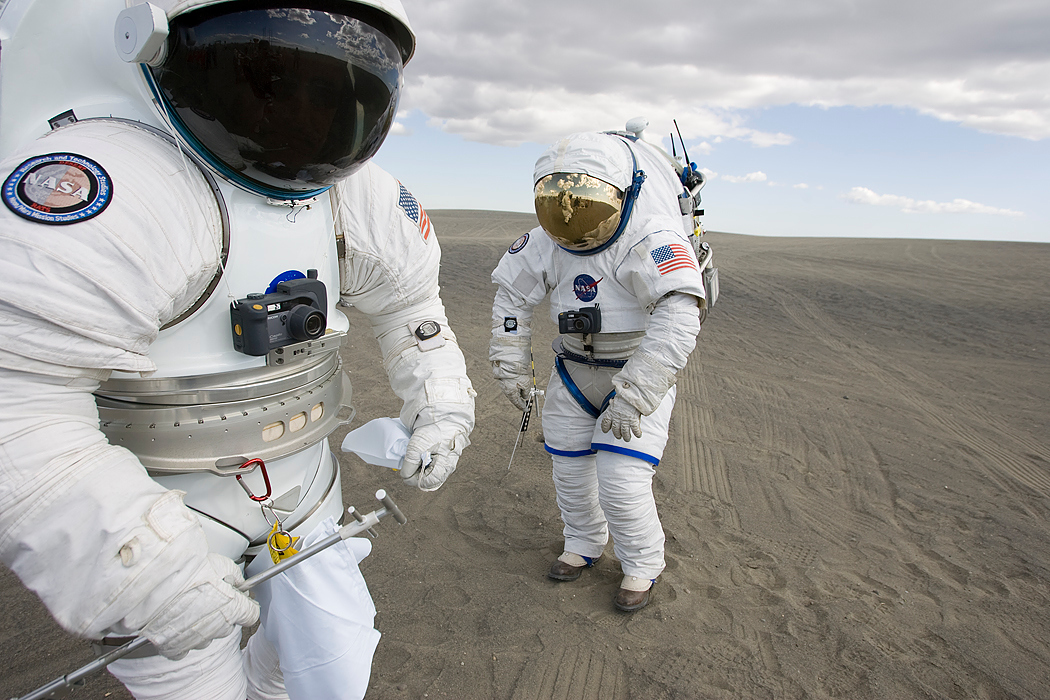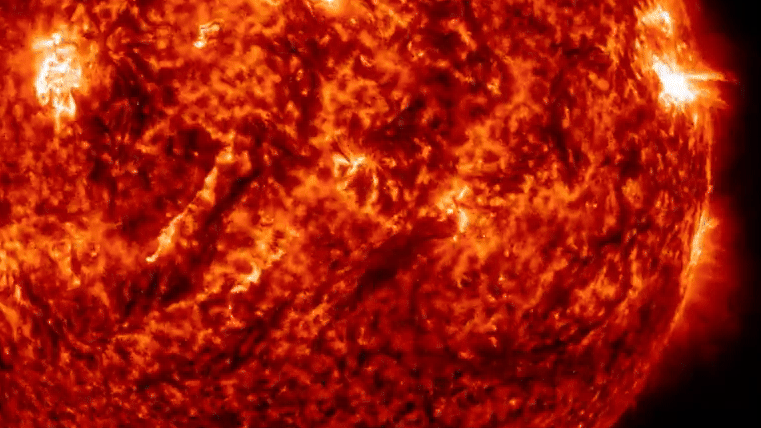If We Ever Want to Walk on Mars, We'd Better Get Serious About Planetary Protection

Humans have big dreams of setting foot on another planet. But before we do, we'll need to figure out how to keep our germs to ourselves and how to protect ourselves from the life we may find there.
That's the mandate of planetary protection, and experts in the field are already developing guidelines for human missions that will visit potentially life-supporting locales, like Mars. One of those scientists is Julie Mitchell, the planetary protection officer at NASA's Johnson Space Center in Houston, who said now is the time to figure out those rules.
"We have to make sure planetary protection is included from the very beginning, which means now," Mitchell told Space.com. [See NASA's Plan for a Base on Mars in Pictures]
NASA already has planetary-protection guidelines in place for robotic missions, although a National Academy of Sciences report that was published July 2 calls even those measures "inadequate." But no such requirements exist for crewed missions, which will require much more stringent processes, Mitchell said.
"We have extra considerations to make beyond what we consider for robotic missions," Mitchell said. "We have microbes all over us; we have skin cells; every time we touch something, we're transferring some number of bacteria."
Mitchell gave a presentation July 16 at the Committee on Space Research of the International Council for Science conference in Pasadena, California, about what's been done so far and what's left to tackle when it comes to preparing planetary-protection measures for crewed missions.
Backward contamination
The Martian environment could be bad news for astronauts if planetary-protection requirements aren't up to snuff. Even if nothing from Mars makes it all the way back to Earth, simply infecting a habitat or spacecraft could be dangerous enough, putting astronauts at risk.
Get the Space.com Newsletter
Breaking space news, the latest updates on rocket launches, skywatching events and more!
Mitchell and her colleagues think the key to tackling this and other planetary-protection challenges is to think at a systems level — in other words, picking an individual system involved in space travel and thinking through each step and its weak spots.
One of her colleagues has already done this with how future spacewalks will play out, poring over the vulnerabilities inherent in leaving the craft, conducting the walk and returning. Two of those steps require opening the sealed craft, and that represents a huge risk, she said.
"[The astronauts] have been walking around on Mars. They're going to have dust on them; they may have bits of rock, small grains, stuck to the suit," Mitchell said. Getting that dust off of spacesuits is going to be a crucial piece of planetary protection to make sure a habitat doesn't become contaminated — and right now, scientists don't know how to do that. "That's actually a really tricky thing to do," Mitchell said. [How to Keep Spacesuits Germ-Free on Mars]
If that dust can't be stopped at the door, it could make its way into crucial life-sustaining systems, like water-recycling facilities, she said. Engineers are confident of their recycling facilities' ability to purify water of terrestrial biological contaminants. "The water on the space station is actually cleaner than what you get from your tap," Mitchell said. "This is something that we know how to do."
But so far, we've done it only where there's been no chance that unidentified, extraterrestrial microbes would sneak into the processing system. It's a very different challenge to stop theoretical Martian life, which could have characteristics scientists can't even predict yet.
"At the end of the day, it comes down to, we need to set up physical barriers so that no matter what that life looks like, they physically don't get transmitted from the outside of the spacecraft to the inside," Mitchell said.
Forward contamination
Mitchell and her colleagues are already starting to think about how humans visiting Mars might contaminate the planet. The same water-recycling system that could be vulnerable to infiltration could also be what pushes humans to contaminate Mars as astronauts struggle to deal with liquid and solid waste that isn't a factor in robotic missions. [Putting Boots on Mars Requires a Long-Term Commitment, Experts Say]
"If you extract most of the water from urine, you're going to end up with a really gross sludge left over," Mitchell said. If you assume a crew is in transit and on the surface for several months straight, that picture gets concerning fast. "That adds up to a lot of brine," Mitchell said.
Figuring out what to do with that "brine" — leave it on Mars, launch it back to Earth or let it stew on the spacecraft — is precisely the sort of planetary-protection challenge deep-space human missions face.
Even if a mission design were to successfully eliminate all possibility of contamination, that wouldn't mean smooth sailing for planetary protection. Humans also require warmth, and we know Mars has plenty of water ice. Putting them together may spell trouble, Mitchell said.
She pictures a scenario in which a spacecraft lands on Martian surface ice and ends up melting it. "You could actually make a nice little habitat for microbes right under your spacecraft," she said. That's still changing the environment in a way that could affect life.
And there's always a chance of unforeseen consequences if something were to go wrong. Take, for example, the dust storm currently wrapping Mars in a yellowish haze. If a few bacteria from Earth managed to sneak out of a spacecraft and into that storm, how far could the winds carry them, and would they find a way to take root on the Red Planet? Right now, we don't know, and that makes Mitchell nervous.
What comes next
Mitchell thinks there's time to tackle these challenges, and she said researchers have already started work on that task. She pointed to a team that, in 2016, put together a list of 41 draft requirements as part of a review of the current state of planetary-protection rules for human missions. Mitchell said they're a start, but there's still more to do.
And NASA can control only its own actions, not what happens with commercial space expeditions carrying humans. "NASA's not a regulatory agency," Mitchell said. "We oversee NASA missions; we're not going to regulate what commercial industry does in that regard."
But current trends in space exploration may offer an important platform for practicing for certain planetary-protection problems. Returning to the moon before landing on Mars will offer a safer space for working out bugs in the system, Mitchell said.
"These are all things that we can practice on the moon in an environment in which we don't actually have to deal with microbes except those we bring with us," Mitchell said. "I'm optimistic that we're going to have solutions to these problems long before we send humans to Mars."
Email Meghan Bartels at mbartels@space.com or follow her @meghanbartels. Follow us @Spacedotcom, Facebook and Google+. Original article on Space.com.
Join our Space Forums to keep talking space on the latest missions, night sky and more! And if you have a news tip, correction or comment, let us know at: community@space.com.

Meghan is a senior writer at Space.com and has more than five years' experience as a science journalist based in New York City. She joined Space.com in July 2018, with previous writing published in outlets including Newsweek and Audubon. Meghan earned an MA in science journalism from New York University and a BA in classics from Georgetown University, and in her free time she enjoys reading and visiting museums. Follow her on Twitter at @meghanbartels.









